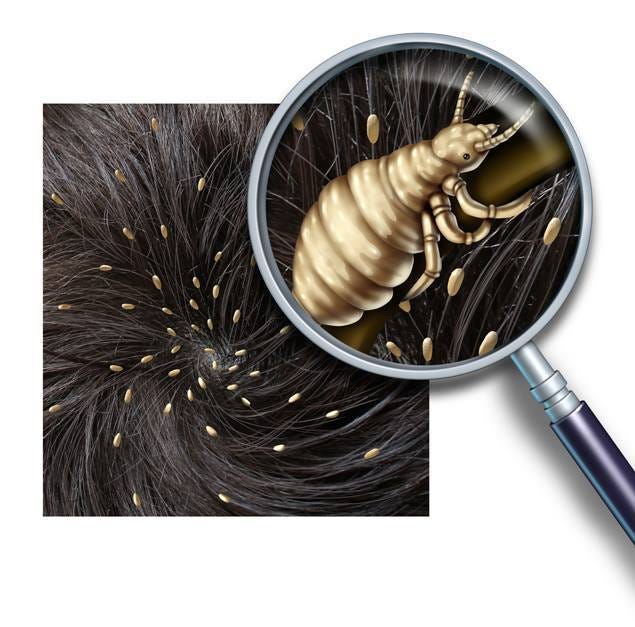Finding the right Head Lice Solutions & information when you're dealing with a head lice problem can be a daunting
task. Let's face it, it's hardly the sort of thing you like to talk about in
everyday conversation. In fact it's almost a taboo subject!

Other people's kids get them. Tramps
and homeless people are probably covered in them, or so you believe. This sort
of thing only happens to people with poor hygiene so it will never happen to
your family. But when your hairdresser tells you that one of your kids has got
lice you are devastated! You feel dirty and think that everyone is looking at
you as though you don't care about your kids!
There's no need to panic. Lots of
people have had head lice some time during their lives. If you think back to
when you were young, you will have most likely had them. Maybe you remember
what your Mum did to get rid of them or perhaps you've had advice from a
friend.
There are many ways to treat head
lice, but however you choose to deal with them you need to act fast. Before you
actually do anything you need to know what it is you are dealing with in order
to treat the infestation correctly.

So what are head lice?
To begin with and to set your mind at
ease, they are not dangerous and they don't carry any awful diseases. They
don't jump like a flea and they don't have wings so lice can't fly. They get
around by crawling. They are about the size of a sesame seed and can be seen by
the naked eye.
Head lice are found living in human
hair and feed from small amounts of blood which they extract from the scalp.
When they draw the blood, the bites cause an itchy irritation which in turn
makes you want to scratch them. This scratching of the head is usually the
first sign that your child may have lice.
Lice are sneaky little parasites and
are quite often missed during normal day to day grooming.
Another thing to be aware of is that
depending how sensitive your child's scalp is to the lice bites, the itching
may not start for a few weeks. By which time you could have a full head of
lice!

You need to very vigilant and keep a
look out for the lice eggs. The eggs are known as nits and are found close to
the scalp on the shaft of the hair.
Nits look very similar to a flake of
dandruff, but there is an easy way to tell them apart. If you try to brush it
off and it comes off easily it's probably dandruff. If it sticks to the hair
then you may have found a nit.
It's more likely that you will find
lice eggs rather than head lice crawling around the scalp. But if you do find
them crawling around, you could have quite a heavy infestation.
The nits are usually yellowish and
hatch after 1 or 2 weeks. Typically the adult lice are brownish. All they need
to survive is the warmth they get from you and the food which they get from the
blood when they bite you. Without the warmth and the food which they get from
the human scalp they can only live for 24 to 48 hours.
If you are sure your child has lice
you need to treat it as quickly and as efficiently as you can. By finding out
as much as you can about head lice treatments you will be well armed when you
go into battle with those annoying little parasites.





0 comments:
Post a Comment